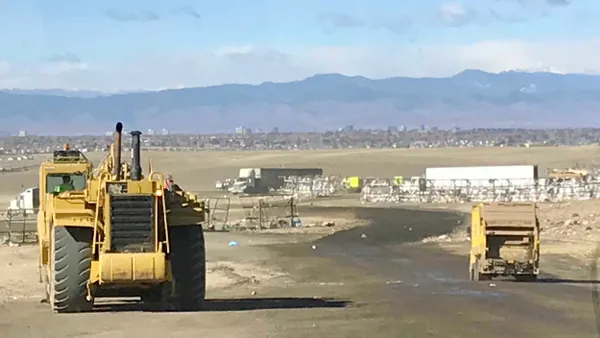UPDATE March 9, 2018: A bill to force the cleanup of the Coakley Landfill passed in the New Hampshire House of Representatives, 207-118, as reported by Seacoast Online. The New Hampshire Senate can now vote on the provision.
The bill, if passed and signed into law, would require the Coakley Landfill Group to install a pump-and-treat system at the contaminated landfill.
The landfill group may owe money to the Environmental Protection Agency for not installing such a pump under a consent decree, though that situation has not resolved itself.
UPDATE March 5, 2018: The Coakley Landfill Group (CLG) could be on the hook for over $5 million dollars because of a consent decree signed between the Environmental Protection Agency (EPA) and the groups who used the landfill, according to Seacoast Online.
The 1991 decree references a $5.25 million payment to the CLG, to be used in part for installing a water treatment pump at the site. If the pump is not installed by the time EPA certifies that the site has been remediated, the CLG will have to pay the federal government $2.75 million plus interest.
A Portsmouth, NH city attorney told Seacoast Online that would be a payment of more than $5 million, and that Portsmouth would be responsible for a little more than half of that sum.
In 1999, the EPA issued a declaration saying the treatment system was not necessary – though that deals with the Record of Decision, not the 1991 consent decree.
The EPA, CLG and New Hampshire Department of Environmental Services are scheduled to hold a public meeting April 5.
UPDATE Feb. 28, 2018: The New Hampshire Attorney General’s office is "looking into" launching an investigation into the Coakley Landfill Group, according to Sea Coast Online. Several New Hampshire lawmakers asked the attorney general to consider an investigation last week. The Coakley Landfill Group has acknowledged spending $27 million with no formal recordkeeping.
Rep. Renny Cushing said the landfill group meets New Hampshire’s definition of a charitable organization and should therefore have to file annual reports with the attorney general’s office.
A bill in the New Hampshire legislature that would force groups involved in dumping hazardous waste at the Coakley Landfill was referred for interim study, according to New Hampshire Public Radio. Some members of the House Environment and Agriculture Committee thought the bill would violate an existing cleanup arrangement between the responsible parties and the United States Environmental Protection Agency (EPA).
Recently, EPA Administrator Scott Pruitt said making progress at the Coakley site was a priority for the agency.
Dive Brief:
- The Coakley landfill Group (CLG), which is responsible for the continued monitoring and remediation of the Coakley Landfill Superfund site, recently hired Glenn Wallace, manager of government relations for the firm Rath, Young and Pignatelli. The CLG's hiring of a New Hampshire lobbyist has drawn criticism from local officials in Hampton, a nearby town, as reported by Sea Coast Online.
- The CLG is a coalition of groups that are responsible for the remediation of the Coakley site. The group consists of the city of Portsmouth, the town of North Hampton, the town of Newington, trash generators and transporters. The CLG has so far paid about $27 million tending to the site.
- Hampton officials and some local lawmakers are concerned that the CLG's lobbyist may push against legislation that seeks to protect drinking water in the state. Wallace told Sea Coast Online there was "nothing dark and mysterious" about his hiring and that a state representative who is concerned he would push back against more strict drinking water standards "may have simply assumed a lobbying group with the CLG is going to oppose her bills."
Dive Insight:
The Coakley site accepted industrial and municipal waste from the Portsmouth region between 1972-1982. From 1982-1985, the site accepted ash from waste-to-energy facilities. Groundwater surrounding the landfill is contaminated with perfluorinated compounds (PFCs) above the Environmental Protection Agency's (EPA) advisory level (a developing issue nationwide) in monitoring wells and below the advisory level in residential wells. 1,4-dioxane, a likely carcinogen, has been found below the advisory level as well.
EPA issued source cleanup plans in 1990 and groundwater cleanup plans in 1994. Since then, CLG has paid into a trust created in 1991 by an EPA record of decision and New Hampshire Department of Environmental Services. Most CLG members are required to pay future costs as well.
The Coakley site is not on the newly-created list of Superfund sites being targeted for immediate action by the EPA and New Hampshire's senators have previously questioned the timing of EPA decisions related to the site. However, Administrator Scott Pruitt has signaled that Superfund cleanup and remediation would be a priority for the agency under his leadership, and the priority list is intended to by "dynamic." If local efforts to remediate the site stall, then, it is possible that the EPA or Pruitt could step in at some point in the future.








